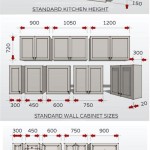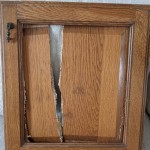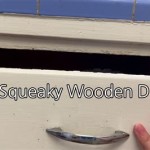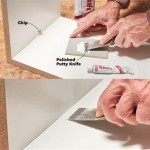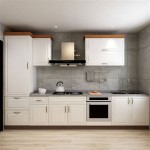Essential Aspects of Cement Board Under Kitchen Cabinets
When it comes to kitchen remodeling, the underlayment beneath your cabinets plays a crucial role in ensuring durability, moisture resistance, and overall functionality. Cement board, a popular choice among professionals, offers exceptional advantages that make it an ideal foundation for your kitchen cabinetry.
1. Moisture Resistance: Cement board is renowned for its exceptional resistance to moisture and humidity. It does not absorb water or swell like traditional wood or gypsum boards, making it the perfect option for kitchens where water exposure is unavoidable. This resistance helps prevent mold, mildew, and rot, ensuring the longevity of your cabinets and the overall health of your kitchen.
2. Fire Resistance: Cement board is non-combustible, which means it will not catch fire or contribute to the spread of flames. This added layer of fire protection provides peace of mind in the event of an accidental fire, safeguarding your kitchen and your family.
3. Structural Stability: Cement board is inherently strong and durable, providing a solid base for your kitchen cabinets. It does not warp or sag over time, ensuring that your cabinets remain securely in place and maintain their proper alignment. This stability prevents issues like loose doors, misaligned drawers, and other structural problems.
4. Mold Prevention: Cement board's moisture resistance and non-porous nature create an inhospitable environment for mold and mildew growth. Unlike wood and gypsum boards, cement board does not provide a suitable substrate for these microorganisms to thrive. This property helps maintain a clean and healthy kitchen environment, reducing the risk of respiratory issues and other health problems associated with mold.
5. Easy Installation: Cement board is relatively easy to cut and install compared to other underlayment materials. It can be scored and snapped or cut with a utility knife, making it convenient for DIY enthusiasts or contractors to work with. This ease of installation saves time and labor costs during the remodeling process.
Conclusion: Cement board is an exceptional choice for underlayment beneath kitchen cabinets due to its moisture resistance, fire resistance, structural stability, mold prevention, and ease of installation. By choosing cement board, you invest in the longevity and functionality of your kitchen while ensuring a healthy and safe environment for your family.

Interiors With Fiber Cement Panels For Home

How To Hang Cement Backer Board For A Wall Full Of Tile Young House Love

Interiors With Fiber Cement Panels For Home

How To Hang Cement Backer Board For A Wall Full Of Tile Young House Love

How To Hang Cement Backer Board For A Wall Full Of Tile Young House Love

Interiors With Fiber Cement Panels For Home

Our Cement Board Siding Backsplash Thrifty Decor Diy And Organizing

Fiber Cement Boards 101 10 Ways To Use In Your Construction Project

How To Hang Cement Backer Board For A Wall Full Of Tile Young House Love

27 Visaka Shelves And Kitchen Cabinet Cabinets Cupboards Building
Related Posts



